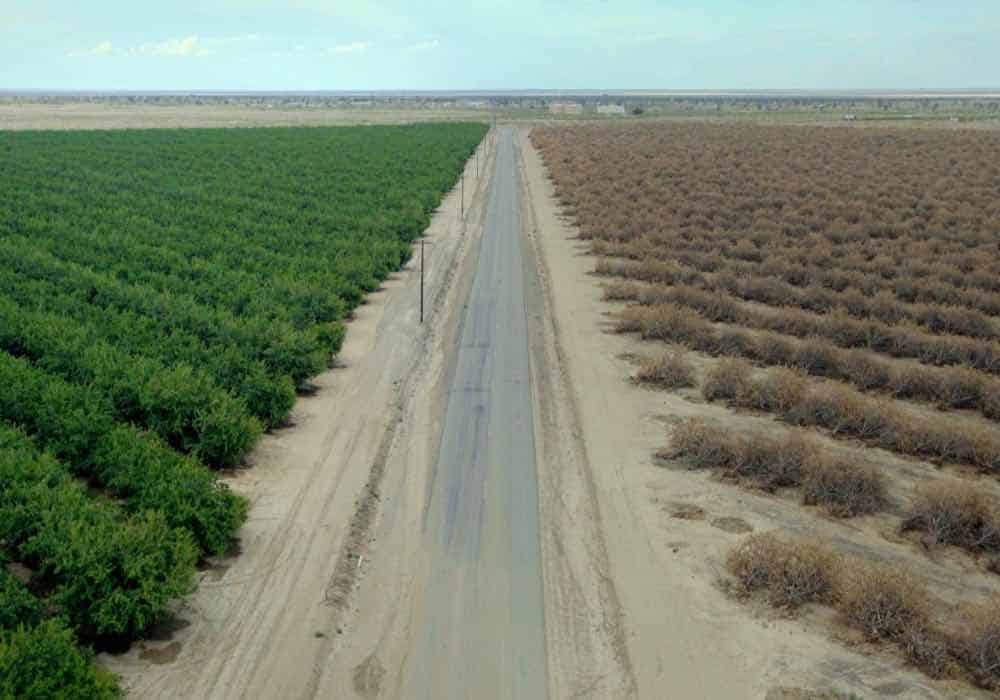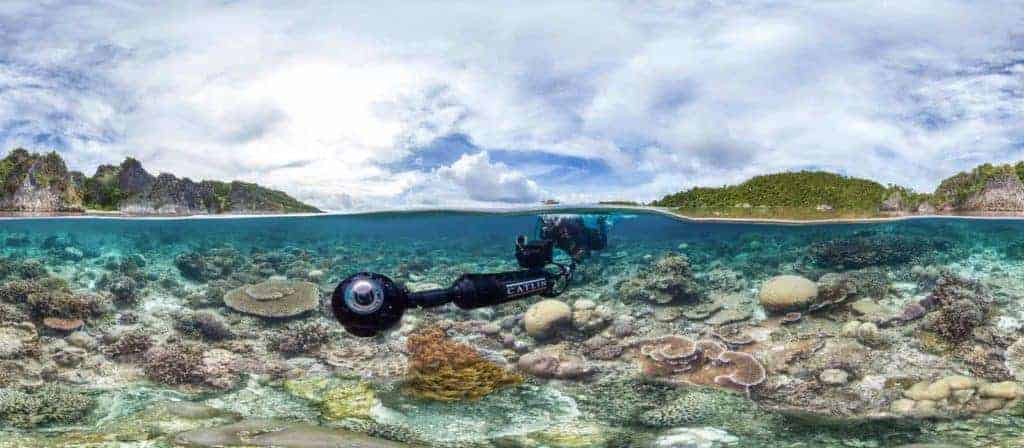Sundance highlighted pressing environmental problems with its commendable but flawed New Climate program.

A surprisingly large number of films screening in Sundance’s inaugural New Climate program were characterized by climate silence. While there were a couple of climate change-focussed films in the program, “new climate” seems like a misnomer, as its focus was more on environmental activism than climate change. It’s worrisome that so many films ignored climate change even when it was directly relevant to the subject at hand.
Despite its flaws, the New Climate program is still noteworthy and important: it’s the only place to find such a high concentration of environmental-themed films outside of specific environmental-focussed film festivals. This makes the New Climate program the best chance for these important films to reach a wider audience. The program featured 14 films from across the festival’s programs, and it was the “first time that Festival programmers have focused efforts to highlight a specific cause”. In past years, there’s been a single environmental doc at Sundance to carry that torch, from How to Let Go of the World (and Learn to Love the Things Climate Can’t Change) to Chasing Ice. The advantage of programming all these films together is both giving audiences a better picture of the overall landscape of environmental problems faced and a glimpse at the different approaches to telling these stories.
[clickToTweet tweet=”The New Climate is the only place to find so many environmental films outside of environmental fests.” quote=”The New Climate is the only place to find so many environmental films outside of environmental fests.”]
New Climate kicked off on the eve of the U.S. Presidential Inauguration with An Inconvenient Sequel: Speaking Truth to Power. The follow-up to An Inconvenient Truth catches up with Al Gore, his evolving powerpoint presentation, and his fight to make worldwide fossil fuel dependence a thing of the past. Over the course of the festival, the program ran the gamut of major environmental issues: water shortage (Water & Power: A California Heist); animal extinction (Trophy), agriculture (Rancher, Farmer, Fisherman and Look and See: A Portrait of Wendell Berry); recycling (Plastic China); and yes, climate change (Chasing Coral).
Rather than create an entirely new programming category for these films, New Climate pulls from films across the festival’s existing programs. The upside is that it made it easier to stumble across these films, no matter which programs were your focus. The downside is it’s unlikely that the program was often seen in its entirety. It wasn’t possible, for example, to spend a day watching the selections back-to-back in a single venue. And one of the best selections, three episodes from the VICE series RISE about Indigenous environmental activism, only screened once as part of a special event.
Read more: Protecting the land — Rancher, Farmer, Fisherman and RISE >>
Sadly, with two crucial exceptions — Chasing Coral and RISE — most selections were examples of what not to do. An Inconvenient Sequel was too narrowly focussed on Al Gore’s work and renewable energy to persuade the not-yet-converted or to suggest next steps for the motivated. Plastic China was more concerned with the lives of people in China involved in the recycling industry than on the industry’s role in the global economy or its effect on the environmental landscape: a compelling documentary, but not necessarily the most useful as a piece of activism.
[clickToTweet tweet=”Water & Power and Rancher, Farmer, Fisherman went out of their way to avoid the term “climate change”” quote=”Water & Power and Rancher, Farmer, Fisherman seemed to go out of their way to avoid using the term “climate change””]
Meanwhile, both Water & Power and Rancher, Farmer, Fisherman seemed to go out of their way to avoid using the term “climate change”. In Water & Power, a documentary about the water crisis in California, I suspect it was to highlight that California’s unique water problems aren’t only caused by climate change, though the droughts and water market have been greatly exacerbated by it. But the cynic in me also thinks it made the film more palatable to climate deniers. Yet this devastating human story of people losing access to basic resources because of corporate corruption could have been a great tool for helping people to understand the effects of climate change and the importance of mitigating it.
Rancher, Farmer, Fisherman was made specifically to appeal to centre-right middle-Americans. It’s careful to remind us that these ranchers, farmers, and fishermen are accidental environmentalists: they’re trying to protect their livelihoods, which just happens to require protecting the environment. Though many of their efforts are responses to climate change or will help with climate change mitigation, the term doesn’t get mentioned even once in the film. Worse, the film focusses solely on white men, largely ignoring the contributions of women or the equivalent struggles for people of colour.
Watching Rise threw Rancher, Farmer, Fisherman’s approach into sharp relief. It didn’t look good to see a film about self-interested white male activists programmed next to one about Indigenous activists, who are often led by women. Worse, Rancher, Farmer, Fisherman portrays environmental conservation as a uniquely patriotic virtue, which is the province of white men. But watching it on the heels of RISE reminded me that these ranchers, farmers, and fishermen are working on stolen land. As the descendants of white settlers, they’re part of why the problems even began.
Read more: Sarain Fox and Michelle Latimer on their VICE series RISE, telling Indigenous stories >>

Jeff Orlowski’s Chasing Coral, which documents the devastating process of coral bleaching, is the epitome of a good environmental documentary. The film helps you understand, at a gut emotional level, why the coral reef is an ecosystem worth protecting: not just because of its role in the global ecosystem, but because its complexity is itself a thing of beauty. If coral spend time above a certain temperature threshold, they will bleach and then die. As average global temperatures rise, high temperature swings also rise, increasing the probability of coral entering this danger zone. Although scientists have known for years that this is happening, nobody has ever documented how it happens over the course of just a few weeks.
Orlowski shows us images of coral under a microscope so we can see it move. The more we understand how coral works, how it grows, how it contributes to the ecosystem, the more beautiful it becomes. And consequently, the more devastating its death and destruction is. One of the film’s most emotional scenes is when the film team presents their photographs of the process of coral bleaching at a conference for coral reef scientists: there isn’t a dry eye in the audience, even though these are all people well aware of what is happening to coral around the world. Their devastation rubs off on us. If even the experts in the field find something new from the documentary, you know it’s doing something right.
[clickToTweet tweet=”Jeff Orlowski’s CHASING CORAL is the epitome of a good environmental documentary. ” quote=”Jeff Orlowski’s Chasing Coral, which documents the devastating process of coral bleaching, is the epitome of a good environmental documentary. “]
As diver and former ad-man Richard Vevers says in the film, what the environmental activism community has is an advertising problem. We need images and stories that can be easily understood by everyone to get people to understand the extent of the devastation happening and feel emotionally invested in changing it. At this, Chasing Coral is extremely effective. This was especially true in the context of a Sundance screening, where you could not only share this passion with a room full of people, but also with the filmmakers, subjects, and scientists behind the film. The Q&A that followed the film allowed the audience to engage with coral reef scientists about their work and the science behind the problem.
The most powerful thing about seeing all of the New Climate films together was that it allowed me to draw connections. How might the approach taken in one film be applied to another topic or filmmaker? When I spoke to director Michelle Latimer about RISE, she said that one of the greatest pleasures of making a series was that you could focus on so many different facets of a problem so that the whole became became greater than the sum of its parts. If you consider Chasing Ice and Chasing Coral as the first two entries in Orlowski’s work to make climate change issues emotionally compelling to a wide audience, imagine what could happen if he could make another six movies. What if Orlowski could make a series like RISE but about different facets of climate change? The impact could be enormous.

